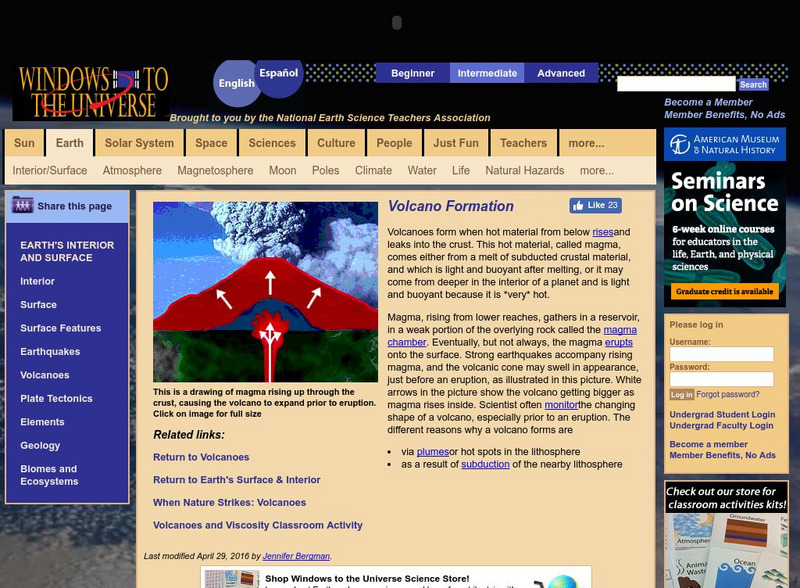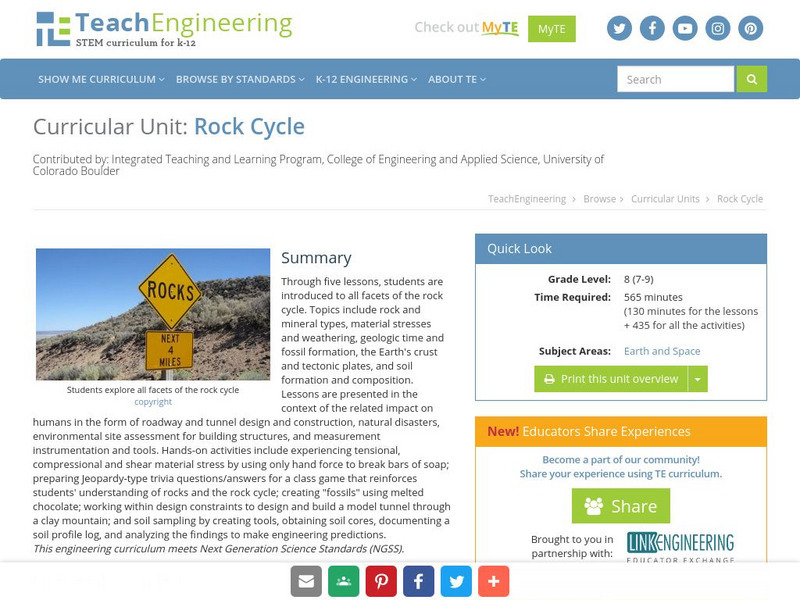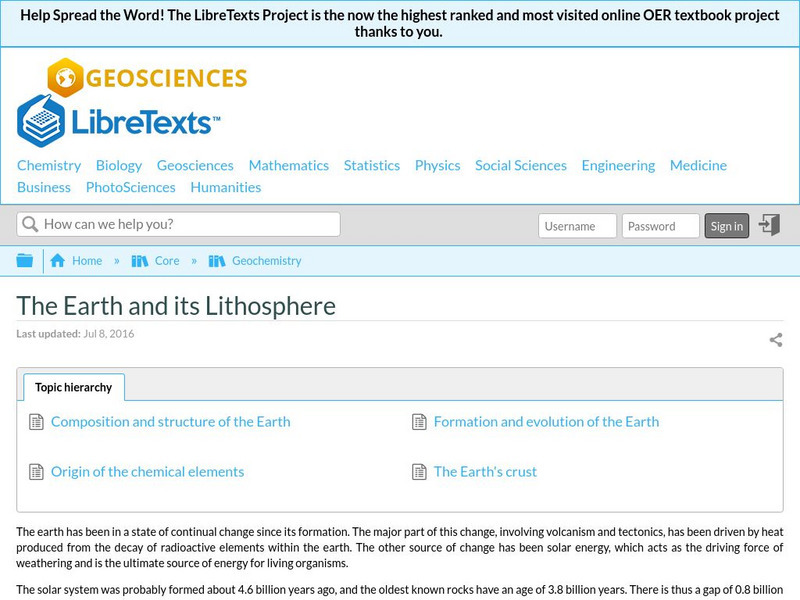Hi, what do you want to do?
Curated OER
Earthquakes
Sixth graders explore reasons for earthquakes. They discuss and describe the types of faults. Using the internet, 6th graders research a specific location of a former earthquake. They describe the damage, magnitude, the epicenter,...
Curated OER
Igneous Rocks
Students perform experiments in which they grow crystals. They draw pictures of where each type of rock originates from. They also identify igneous rocks by using a chart.
Curated OER
Landforms
Students research landforms created by tectonic movement. In this landforms lessons, students discuss caves, canyons, mountains, valleys, and undersea vents and the ecosystems unique to these environments.
Curated OER
Modeling the Rock Cycle
Students explore the differences in sedimentary, metamorphic, and igneous rocks. They discuss the rock cycle of the different formations. Students discuss how rock is formed into different shapes. They explore, predict, and create each...
Curated OER
Where to Live?
Students examine types of spatial data found in a GIS. In this geography activity students use a GIS to facilitate analysis and decision making.
Curated OER
Clouds as Art: Torn Paper Landscape
Students create a torn paper landscape and use it to study clouds. In this cloud study and art lesson, students make a background art image from torn paper. Students create a torn paper landscape and use cotton balls to illustrate...
Curated OER
Relief Maps
Students study geographical maps and their functions. In this geography lesson plan students work in groups to build a map to scale.
Curated OER
4.2: Exploring Rocks
Young scholars collect and look at rocks and write down information about them in science notebooks. They make comparisons and sort the rocks according to their properties, and then discuss their findings with their classmates and put...
Curated OER
Finding Science in An American Childhood by Annie Dillard
Students read excerpts from Annie Dillard's memoir, "An American Childhood," with the teacher. They experience opportunities to connect English, science, nature and art together from a new and unique perspective. This approach serves as...
Curated OER
Volcanoes
Students study volcanoes. In this volcanoes lesson, students read several volcano paragraphs and study the pictures or diagrams. Students then make an erupting volcano, complete website research about volcanoes, and answer several...
Curated OER
Why is the Ocean Salty?
In this ocean salt worksheet, students read about the processes that have lead to the salt content in the ocean. Then students complete 5 short answer questions.
Curated OER
Plate Tectonic - Volcanoes (K)
Students observe how lava flows from a volcano by watching the teacher create a mini volcano with shaving cream.
Curated OER
2.4: Metamorphic Rocks
Second graders work with material to simulate changes caused by both heat and pressure. They assimilate what they learned learned in past lessons to explain the rock cycle.
Curated OER
Explore Rocks With Hands On Activities
You can have students use crayons to learn about igneous, metamorphic and sedimentary rocks.
Smithsonian Institution
National Museum of Natural History: Paleobiology: Geologic Time: Hadean Eon
Journey into the past while reading this comprehensive overview of the Hadean Eon that covers topics such as the formation of the earth, its surface and atmosphere, fossil evidence, erosion and plate tectonics.
Indiana University
Indiana University: Evolution of Continents and Oceans
A course lecture on how the Earth's geological features have evolved through the movements of tectonic plates. Explains the different types of plate boundaries and how they manifest in geological formations. Also describes the structure...
National Earth Science Teachers Association
Windows to the Universe: Volcano Formation
Explanation of the factors that result in the formation of volcanoes, some basic but helpful animations and photographs.
Other
Canadian Centre for Energy Information: Earth Really Rocks [Pdf]
Earth Really Rocks is a teaching unit for Grades K-3. It approaches the study of rocks from an energy perspective, looking at how gas and oil are formed underground, as well as at sedimentary rocks and the structure of the Earth's crust....
TeachEngineering
Teach Engineering: Rock Cycle
Through five lessons, students are introduced to all facets of the rock cycle. Topics include rock and mineral types, material stresses and weathering, geologic time and fossil formation, the Earth's crust and tectonic plates, and soil...
The Franklin Institute
The Franklin Institute: Land Mass Formation
The Franklin Institute has provided a demonstration that theorizes how the earth's crust was formed. This is a lesson plan that needs only a few materials.
Energy4Me
Energy4me: Oil and Natural Gas Formation
Students will learn that oil and natural gas taken from the earth's crust today originated as small plants and animals that lived in the ocean millions of years ago.
Incorporated Research Institutions for Seismology
Iris: Seismic Tomography [Pdf]
Learn how seismic tomography imaging helps scientists understand the formation of the Earth's interior.
Annenberg Foundation
Annenberg Learner: Earth and Space Science: The Geologic Timeline
Take this online quiz and test your knowledge of geological history, and the formation of our atmosphere, water, crust, oxygen, tectonic plates, Moon, and the rest of the Earth.
Libre Text
Libre Texts: Geochemistry: The Earth and Its Lithosphere
The Earth has been in a state of continual change since its formation. The major part of this change, involving volcanism and tectonics, has been driven by heat produced from the decay of radioactive elements within the Earth. The other...























